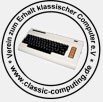Greetings,
About five years ago, I bought my Spanish P2, at first I thought it was some sort of S-100 system, but I could never imagine that for this amount of time I'd have the only known unit of a regional variant. About two weeks ago, a second unit was found and while I have some relief, the fact that it's not working doesn't help. For about these five years, I have barely turned it on, as its PSU was half-dead and the truth is that I don't like much the ATX patch (for a temporary solution is ok, but for a permanent one...).
In November, I decided to start drawing my memory board and in early December, when my Italian unit arrived half-working I found too many single points of failure (SPF from now) that may prevent a unit to work. There are other related issues that does not prevent them to work but should also be addressed.
* The power supplies are slowly dying.
* Case cracks and disintegrates.
* All ROMs are non-standard TMS-27xx.
* The use of specific, specialized components (such as the VTAC) and cost of future replacements.
* Broken keyboards with missing parts.
And a few more.
These issues are so common between current owners of this system that individualized solutions are not effective anymore. As every unit will eventually die for the same causes I think we should set some sort of standard. I've started talks with a relative of mine, who is more qualified than me in analog electronics, to start working on a new PSU. I don't know if we'll reach anything, but it's worth trying.
There are also issues with information regarding the computer, from its ROMs' images to manuals. If my Spanish character ROM dies now, no replacement is available, I'd have to pray that overCLK's (the only other Spanish user) is working and wait him to dump it. Most other regional versions are unaccounted. Lost?
My question is if anybody has some sort of idea to maintain the systems running for a few more years. I'd be glad to hear your opinions.
Thank you very much!

